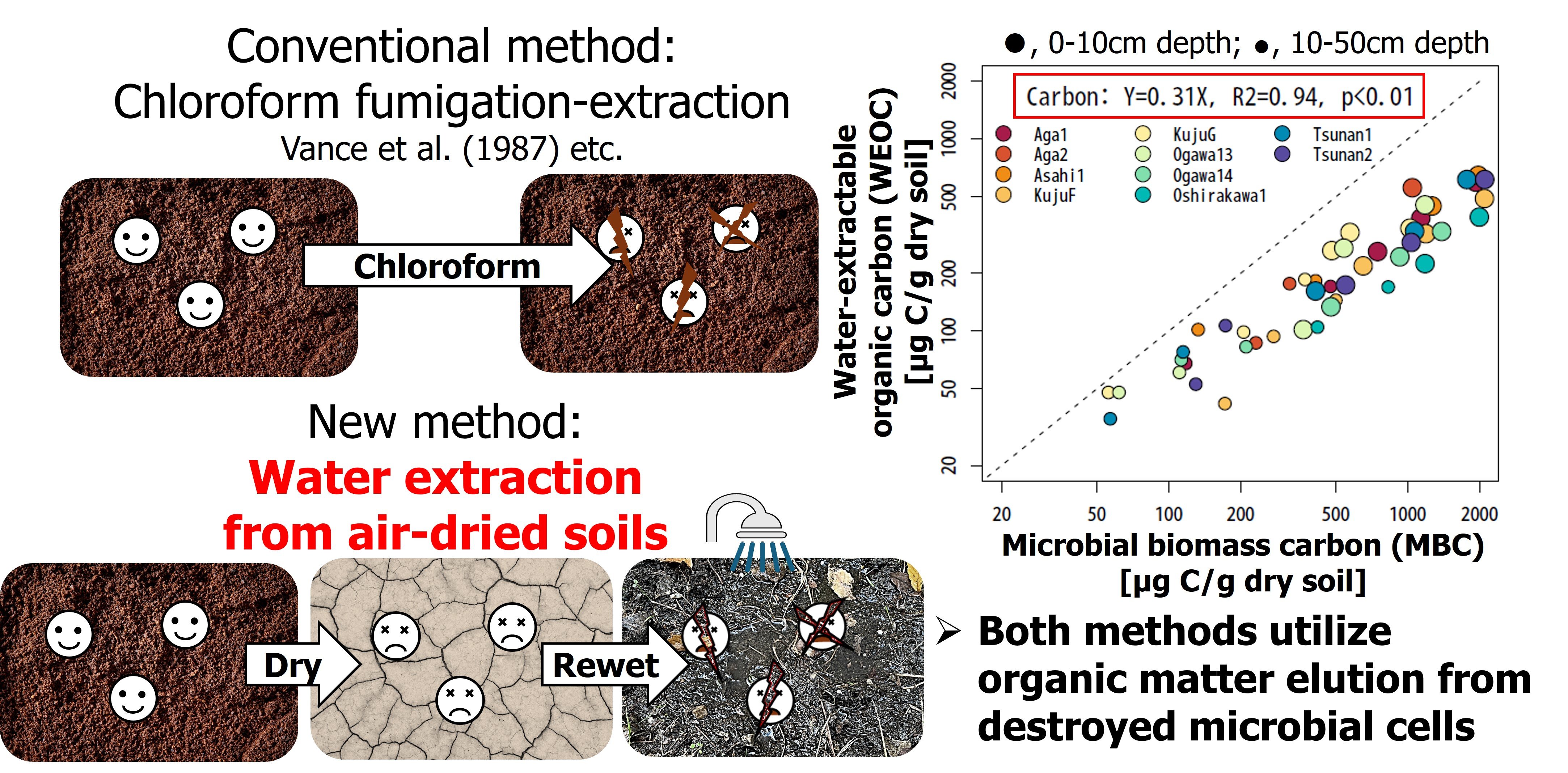Professor Hiradate and his research group develop an effective method for estimating soil microbial biomass using air-dried soil samples
Fukuoka, Japan-- In a remarkable advancement for soil science, researchers from Japan have developed a novel method for estimating microbial biomass using water-extractable organic matter (WEOM) from air-dried soils. This innovative approach not only simplifies the estimation process but also eliminates the need for toxic solvents typically used in traditional methods, such as chloroform fumigation extraction.
A research was conducted by a dedicated team from Kyushu University, Niigata University, Japan Atomic Energy Agency, and Anhui Academy of Agricultural Sciences researchers. The study analyzed 50 soil samples from ten diverse profiles across various regions in Japan, including six forests and one pasture. The researchers aimed to evaluate the relationship between WEOM measurements and microbial biomass, focusing on both carbon and nitrogen content.
The findings revealed a strong correlation between the amount of water-extractable organic carbon obtained from air-dried soils and microbial biomass carbon, with a squared correlation coefficient (R²) of 0.94 and a statistical probability (P) of less than 0.01. This indicates that WEOM can serve as a reliable estimate of microbial biomass, particularly for carbon content, which is crucial for understanding soil health and ecosystem functioning.
Moreover, the study highlighted that the relationships between WEOM and microbial biomass carbon were consistent with soil physicochemical properties, achieving an R² of 1.00 and a root mean square error (RMSE) of just 0.04. In contrast, the correlation between water-extractable total nitrogen and microbial biomass nitrogen was weaker, with an R² and RMSE of 0.73 and 0.28, respectively. This discrepancy was attributed to differences in inorganic nitrogen compounds present in the soil extracts.
The implications of this research are profound. By utilizing air-dried soils, researchers can avoid the complexities and hazards associated with traditional methods, making microbial biomass estimation more accessible and practical for a wider range of studies. This method not only enhances our understanding of soil microbiology but also paves the way for more sustainable practices in environmental research and agriculture.
While the authors caution that this method remains an empirical estimation requiring further validation across diverse soil samples, the potential for this innovative approach to transform soil science is undeniable. Future research will be essential to confirm its applicability in different soil types and environmental conditions.
This ground-breaking method for estimating microbial biomass represents a significant step forward in soil science, providing researchers with a safer and more efficient tool for studying the vital role of microorganisms in soil health and ecosystem dynamics. As the scientific community continues to explore the potential of WEOM, this study marks a pivotal moment in the mission for sustainable and effective soil management practices.
Reference
Link to the original article:
Estimation of microbial biomass based on water-extractable organic matter from air-dried soils from Japanese forests and pasture
https://link.springer.com/article/10.1007/s44378-025-00053-4

In Compares a traditional (top) and a new innovative method (bottom) for estimating microbial biomass carbon (MBC) in soils. The new approach uses air-drying and rewetting instead of toxic chemicals and shows strong results--making it a safer, low-cost, and effective alternative.
For Research-related inquiries












 Contact
Contact
 Access Map
Access Map

